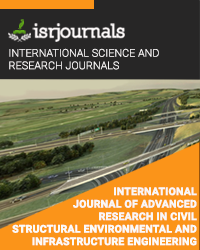planning designing and analysing of cooling tower
R.PURUSOTHAMAN,
Published in International Journal of Advanced Research in Civil,Structural,Environmental and Infrastructure Engineering and Developing
ISSN: 2320-723X Impact Factor:1.7 Volume:3 Issue:1 Year: 20 March,2018 Pages:517-523

Abstract
Besides, temperature consideration is major constituents in an industry. However, the problem of over temperature of all is defying solution. The working of people faces more effects . Hence in order to overcome this problem construction process should be quick, tall and effective to accommodate people save as their life. So we have chosen this topic “PLANNING, DESIGNING AND ANALYSING OF COOLING TOWER”. This type of structure helps to build tall structure for haled the waste temperature. Hence the structure to reduce the increasing temperature in the steel plant. This structure to withstand the temperature load and other external loads. As that are highly efficient in taking the loads. Not only the temperature load but also earthquake load and wind load. This project is done based on STAAD-PRO8 from the result analysis that the given specification and loads are withstand .Hence we provide the design and following dimension.
Kewords
concrete,steel,aggregate,sand etc
Reference
[1] Abel, J.F. and Gould, P.L. 1981. Buckling of Concrete Cooling Towers Shells, ACI SP-67, American Concrete Institute, Detroit, Michigan, pp. 135-160. [2] ACI-ASCE Committee 334. 1977. Recommended Practice for the Design and Construction of Reinforced Concrete Cooling Towers, ACI J., 74(1), 22-31. [3] Gould, P.L. 1985. Finite Element Analysis of Shells of Revolution, Pitman. [4] Gould, P.L., Suryoutomo, H., and Sen, S.K. 1974. Dynamic analysis of column-supported hyperboloidal shells, Earth. Eng. Struct. Dyn., 2, 269-279. [5] Gould, P.L. and Guedelhoefer, O.C. 1988. Repair and Completion of Damaged Cooling Tower, J. Struct. Eng., 115(3), 576-593. [6] Hayashi, K. and Gould, P.L. 1983. Cracking load for a wind-loaded reinforced concrete cooling tower, ACI J., 80(4), 318-325. [7] IASS-Recommendations for the Design of Hyperbolic or Other Similarly Shaped Cooling Towers. 1977. Intern. Assoc. for Shell and Space Structures, Working Group No. 3, Brussels. [8] Kr¨atzig,W.B. and Zhuang, Y. 1992. Collapse simulation of reinforced natural draught cooling towers, Eng. Struct., 14(5), 291-299. [9] Kr¨atzig,W.B. and Meskouris, K. 1993. Natural draught cooling towers: An increasing need for structural research, Bull. IASS, 34(1), 37-51. [10] Kr¨atzig,W.B. and Gruber, K.P. 1996. Life-Cycle Damage Simulations ofNatural Draught Cooling Towers inNatural Draught Cooling Towers,Wittek,U. andKr¨atzig,W., Eds., A.A. Balkema, Rotterdam, 151-158. [11] Minimum Design Loads for Buildings and Other Structures. 1994. ASCE Standard 7-93, ASCE, New York. [12] Mungan, I. 1976. Buckling stress states of hyperboloid shells, J. Struct. Div., ASCE, 102, 2005-2020. [13] VGB Guideline. 1990. Structural Design of Cooling Towers, VGB-Technical Committee, “Civil Engineering Problems of Cooling Towers”, Essen, Germany.

